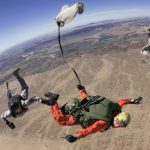
The act of breathing is such a simple function of life that most of us take it for granted. If you would have asked me 10 years ago to read a book on the subject I would have refused. I would have told you I am not a doctor, and anything beyond the medical elements of the subject is just crazy stuff. However, people change. We learn and we grow such that when I came across this book back in the summer of 2021, I knew I had to read it.

Nestor, James. Breath: The New Science of a Lost Art. London : Penguin Life 2021.
Why did I have to read this book? Some Background…
My Mom suffers from major anxiety issues. My grandmother, who I never really knew well also suffered from major anxiety issues. A recent article on CNN highlighted some statistics pointing out that about 1 in 4 men and 4 in 10 women will develop an anxiety disorder at some point during their lifetime. These facts put me on a journey to better understand anxiety. The more I read, the more videos I watched on the subject, the more I discovered that there is a very close relationship that exists between anxiety and how we breathe.
In one video I saw a person demonstrate that if you regulate your breathing in just the right way, you can actually put your body into a mode where it feels like you are experiencing a panic attack. I should have bookmarked the video so I could share it here. Regardless, the more research I did, the more I came across people who will tell you that if you want to manage your anxieties then you need to learn to breath differently. There are now literally hundreds of videos out there on the subject of breathing. In just about each case, they will get you doing breathing exercises to help your body calm down and so in turn to rid you of your feeling of anxiety and panic – and it works!!!
I also was hearing more and more about people who suffered from sleep apnea. I am not sure of all the science but in most of my reading, sleep apnea is identified as a sleep disorder. However, in my mind sleep apnea is really just a breathing problem. While you are asleep, the soft tissue in your airway relaxes which in turn blocks the flow of air into your lungs and the result is that you can’t breath. But your body wakes up, your soft tissues respond, and your airway in turn opens up and you are then able to breath again. The point however being that sleep apnea has become a huge issue and the supposed solution is for the patient to use a CPAP machine – essentially forcing air into the lungs while the person is asleep. In other words, sleep apnea is really a breathing issue while we are asleep.
So, if the issue is anxiety or sleep apnea, what I was learning was that how we breath has a huge impact on our lives. I began to realize that I needed to learn and understand more. So, when I heard about this book by James Nestor called “Breath: the new science of a lost art”, I knew that I needed to read it.
Some stuff in this book I can’t support…
I have a problem with Yoga. I have a problem with this idea that when we pray or meditate that we should “empty ourselves”. These activities at best make me nervous, and at worst open the door to all kinds of evil in our lives. Nestor in this book tells stories of things that Monks were able to accomplish. He talks about Monks praying and about how they meditate. He tells of how they would regulate their breathing and the results that would follow. If you are a follower of Jesus then some of the things that Nestor describes will fly in the face of what you believe.
As a Christian, I believe that we should engage in the spiritual disciplines of prayer and meditation. I simply don’t agree with the way prayer and or meditation is described in this book. When I think of meditation done the right way, I think of the act of reflecting on scripture that we have just read or memorized. Meditation should be a quiet focused time where we rehearse the bible verses that we have memorized, or where we reflect on who God is and what He has already said to us through His word.
However, just because Nestor talks about Monks and other people we would fundamentally disagree with, we need to be careful not to discount his underlying argument. Just because something is used for evil by one person or another, doesn’t mean it can’t be used for good. A computer is a tool. I have seen people do some terrible things with computers and yet they also help us accomplish some incredible things for good. The problem is not the tool, the problem is in how the tool is being used.
This applies for the act of breathing. I disagree with Eastern Mysticism, Budhism etc. In fact the more I learn the more I am disturbed. I am also admittedly skeptical of some of what Nestor describes the Monks as having accomplished. Yet, what I am very convinced of at this point is that there is incredible value in learning to regulate and manage how we breathe.
Some stuff in this book is fascinating and seems to defy logic…
Some stuff makes total sense and we need to pay attention.
There are a couple of things that I took from the book that I think we need to pay very close attention to. The first is the mechanics of breathing – how we inhale, hold and exhale. The second is is the impact of our facial structure on our breathing.
Let me start by pointing out a couple of things about our facial structure first. What Nestor argues is that the shape of our skull has shifted over the centuries. He argues that our mouths have shrunk, that our nasal passages have become more constricted and the result is that our our airways are not near as open as they once were. Even if you don’t buy into his full description of the evolution of the skull (and I personally am not sure what to think on it), what he says makes sense about the shape of the skull impacting how we breathe. My own personal experience has taught me that very clearly.
While I have not done much in the way of official research, I have learned that there is a growing trend towards surgical solutions for people who struggle with breathing issues. For example, those who struggle with sleep apnea (a breathing problem while sleeping) could have jaw advancement surgery done. In performing the surgery, what is essentially done is the lower and/or upper jaw is broken away from the skull, and then pulled forward. It is then fastened back in to place with titanium plates keeping the jaw in its new forward position. When the jaw bones are moved forward, all the associated soft tissue move forward with it. The result is an opening of the airway. To put it in blunt terms, jaw advancement surgery is the physical adjustment of the facial structure to enlarge the oral cavities and the more specifically the airway to facilitate breathing. Obviously this is a substantially invasive approach to solve the problem. Yet the results seem to speak for themselves.
Of course the suggestion will always be to seek out all other means of treatment before going to such drastic measures. Which brings us back to the simple act of breathing. Breathing is such a simple thing and yet we really don’t pay attention to it very much. You inhale, you hold, you exhale. Sounds simple right? But spend time reading about breathing exercises, or speak with a breathing couch and you will learn very different.
Depending on your goals, and who is coaching you, you will be asked to change any of the many parts of your breathing. The focus often is on the major functions of your inhale, how long your hold air in your lungs, your exhale and then how long you hold without any air in your lungs.
So for example think for a moment how we inhale – that is how air enters into our body. Does your inhale take 3 seconds or 10 seconds? Is your inhale a big gulp of air, or are you bringing in air slowly and steadily? Are you breathing in through your nose or through your mouth? If you are breathing through your nose then are you relying mostly on your left nostril, your right nostril or both? As the air goes into your lungs, are you making much use of your diaphragm? So how we go about bringing air in to our lungs is a complex process that we can regulate.
With so many variables the whole process becomes pretty complex. As you read Nestors book you discover that each variable has an impact on your body. Without getting into too many details, in my own experiments, I have found that a prolonged inhale followed by a prolonged exhale really helps me to relax. When I say prolonged, I am talking about a slow gradual inhale that takes a full 10 seconds followed by an exhale that takes just as long. Repeat that cycle for only 10 minutes and you will experience a noticeable difference in how you feel.
RECENT POSTS
 Anxiety and Stress and Lifestyle2023-07-25
Anxiety and Stress and Lifestyle2023-07-25 Anxiety and Sleep2023-07-25
Anxiety and Sleep2023-07-25 Anxiety and Exercise2023-07-25
Anxiety and Exercise2023-07-25
WORTH QUOTING
Scores of studies have shown that venting doesn’t soothe anger; it fuels it.